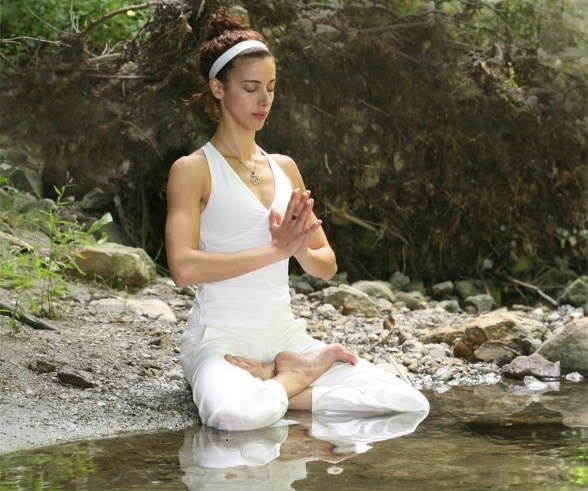
Inside Yoga 185 (28/11/2016)
Learning meditation techniques can be easier than finding the time and patience to sit still long enough to practice meditation. Sitting in a class is easier because the teacher controls when you finish but try it at home and it is suddenly much harder. This is a short guide to finding your way into a personal meditation practice.
Many people who try to practice meditation at home find themselves starting with all the good intentions of sitting still and practicing for x number of minutes, but it doesn’t last long. After a few minutes they find themselves becoming increasingly restless and thoughts about what else could be done lead to the meditation being abandoned. Suddenly a cup of tea seems a much better activity or we remember that we have some work or chores to do, and we think “do it now”.
If this happens to you, do not worry that you are doing something wrong, because I would say everyone struggles at first with this; we learn not to respond to these temptations and distractions.
So how to start: start with manageable targets by making the practice shorter, for example, 5 minutes, 10 minutes, 20 minutes or whatever seems possible. It is far better to have a good quality meditation which is short than set a target that sees you struggle all the way along. You might know that many meditators might sit for an hour every session, but don’t let that put you off. Walk before you run.
Use a stopwatch or a timer to set the time period, and these days our mobile phones have a timer function, and mine has a soft sound which doesn’t make me jump when the meditation period ends. Set your timer to the length of period you intend to meditate and then start, promising yourself that you will not give up and will sit still for the duration, and if possible will keep your eyes closed throughout – especially do not look at the timer to see how long you have left.
What you do as a meditation is up to you, but I recommend keeping it simple such as mindfulness of the breath as this is easier to focus on than a pranayama exercise. Meditation can appear complicated but in essence it is about paying attention, for example watching the ebb and flow of your breathing.
Meditation is associated with enlightened thoughts and realisations about the nature of life and our existence and so forth, and this can happen to you but the advice is simple: do not look for this. Also, meditation is associated with blissful feelings and euphoric experiences, but as before, looking for it is not the idea of meditation. Simply watch your breathing and sit still.
Free yourself of all thoughts and sit quietly and watch. This is akin to the fleeting moments we have of complete relaxation when we haven’t a thought or care in the world, we momentarily feel light and free. That is all we want to feel when meditating and this practice teaches how to access this stillness intentionally.
When to practice: early or late in the day is ideal. Before breakfast, before going to work, before starting the official day, is seen as the best time to practice. Before the day has got ahead of itself and we have no time left to practice meditation. But do try whatever time works. Last week, I was in my car, in car park, between classes killing time. I had my book and emails, but I decided what I really needed right then was a meditation, so I set my timer to 20 minutes and meditated. It was just what I needed.
Thoughts can be very incessant and nagging but they can be controlled. When you practice, especially in the early days you will feel that you are lost in thought for most of the session. Just keep practising because each time you drop a thought and return to your breathing you are training your own mind this skill. Gradually you will see that the quiet moments between thoughts become longer and the intrusive thoughts less frequent.
But be aware it doesn’t matter how many years you practice meditation for you will always get distracting thoughts. We all experience thoughts but it becomes easier to drop thoughts and as a meditator you become more skilled at catching the thought as it rises in your mind and before it has turned into a long conversation in your head!
Where to sit: wherever is comfortable for you. You can sit on the floor but a chair could be better for you. It is recommended to sit without leaning back against a support, in order to remain alert and awake, but if you cannot without pain and discomfort, a suitable alternative is fine.
I haven’t mentioned yoga asanas (exercises) so far but they complement meditation as they are a preparation for meditation because these exercises can help shed restlessness or fatigue before we meditate so that the practice feels more comfortable and alert.
I hope this helps to encourage practice and to make it more accessible to you. It does help and it does work.
Feel free to share this blog with others, and any thoughts, questions or comments do contact me via the blog reply panel below or email me gary@yogabristol.co.uk
